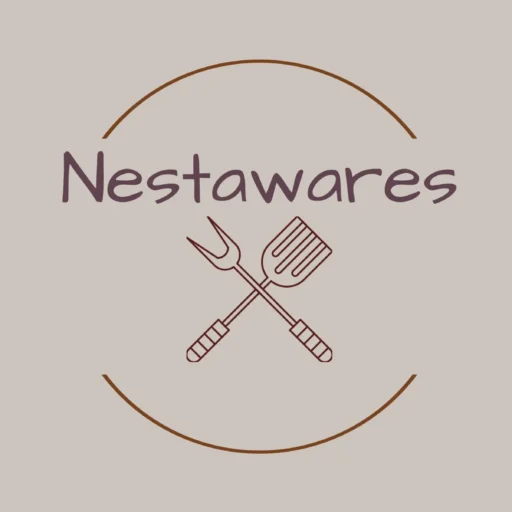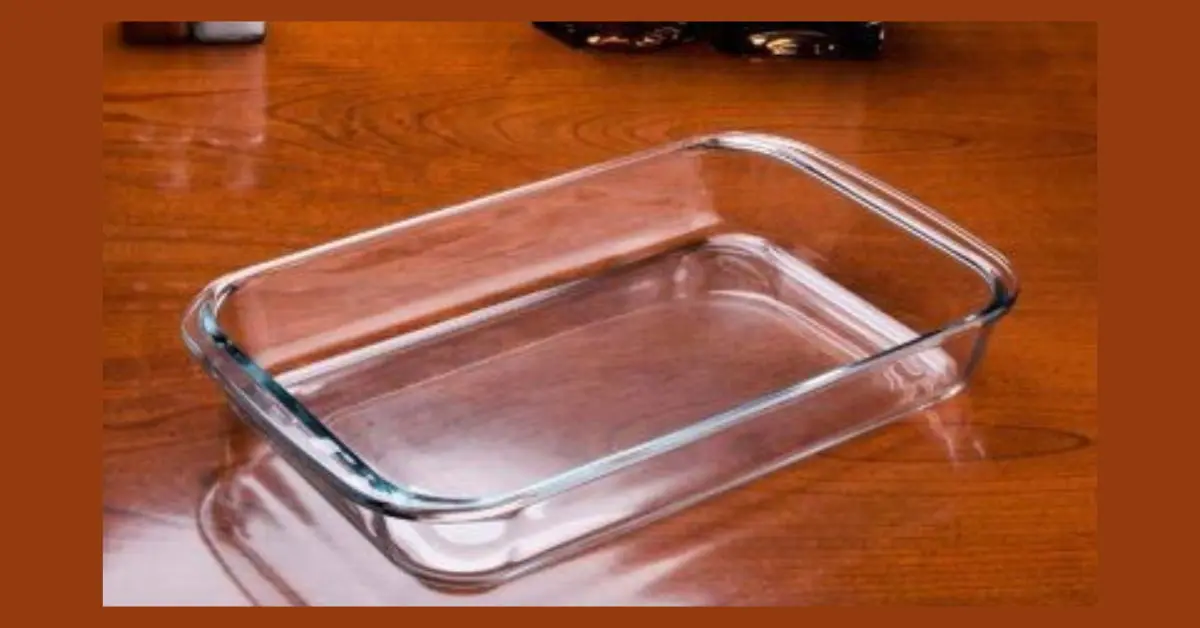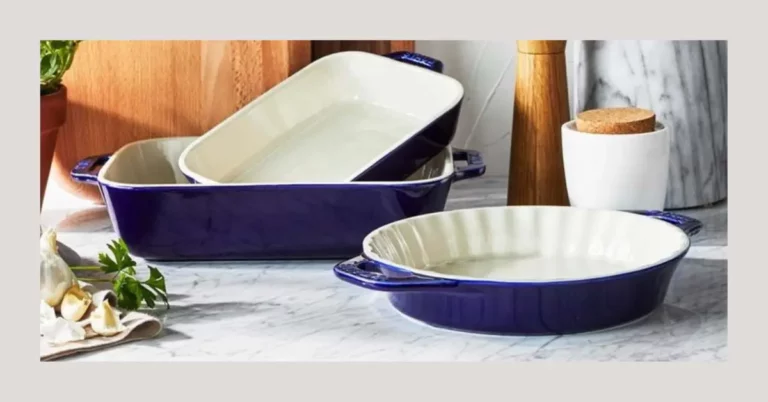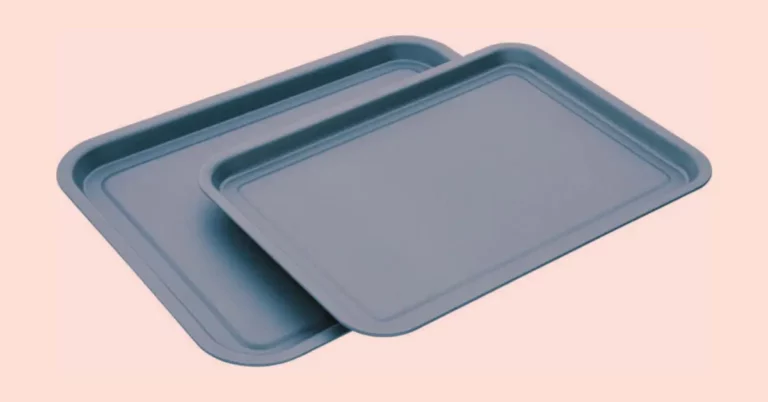Disclosure: As an Amazon associate, I may earn from qualifying purchases
If you are tired of your bread getting stuck in traditional metal pans, then it’s time to embrace the wonders of glass bread pans and molds. Whether you’re a seasoned baker or a newbie in the kitchen, these glass wonders have taken the baking world by storm.
But before you dive into the world of glass baking, you probably have a few questions. Don’t worry, we’ve got you covered!
In this article, we’ll address some frequently asked questions about glass bread pans and explore the best techniques for baking with them, discuss greasing options, and help you choose the perfect material and pan for your bread-baking adventures.
We often get unpredictable results with traditional metal pans and sometimes the solution for that is to switch things up. Glass bread pans offer a host of advantages that can elevate your baking game.
From their excellent heat retention to their ability to maintain moisture, these pans create the perfect environment for achieving bakery-worthy bread.
Adding to that, many home bakers may also feel that their pantry is incomplete and glass bread pans might just be the secret ingredient they’ve been missing. With their clear visibility, excellent heat distribution, and non-reactive properties, glass pans have become a popular choice among bakers of all levels.
Whether you’re aiming for perfectly golden crusts, moist interiors, or even heating throughout, these versatile pans deliver fantastic results.
In this article, we’ll delve into the world of glass bread pans, exploring their benefits, sharing expert tips and techniques, and answering common questions to help you achieve bakery-quality bread from the comfort of your own kitchen.
So, grab your apron and let’s get started!
But before you dive into the world of glass baking, you probably have a few questions. Don’t worry, we’ve got you covered!
In this article, we’ll address some frequently asked questions about glass bread pans and explore the best techniques for baking with them, discuss greasing options, and help you choose the perfect material and pan for your bread-baking adventures.
We often get unpredictable results with traditional metal pans and sometimes the solution for that is to switch things up. Glass bread pans offer a host of advantages that can elevate your baking game.
From their excellent heat retention to their ability to maintain moisture, these pans create the perfect environment for achieving bakery-worthy bread.
Adding to that, many home bakers may also feel that their pantry is incomplete and glass bread pans might just be the secret ingredient they’ve been missing. With their clear visibility, excellent heat distribution, and non-reactive properties, glass pans have become a popular choice among bakers of all levels.
Whether you’re aiming for perfectly golden crusts, moist interiors, or even heating throughout, these versatile pans deliver fantastic results.
In this article, we’ll delve into the world of glass bread pans, exploring their benefits, sharing expert tips and techniques, and answering common questions to help you achieve bakery-quality bread from the comfort of your own kitchen.
So, grab your apron and let’s get started!
Frequently Asked Questions
Is it better to bake bread in a glass or metal pan?
Both glass and metal pans can be used to bake bread, but they have some differences that may affect the outcome of your bread.
Glass pans tend to heat up and cool down more slowly than metal pans, so they can result in bread that is more evenly browned but also may take longer to bake.
Metal pans, on the other hand, heat up and cool down more quickly, so they may result in bread that is less evenly browned but bakes faster.
Ultimately, the choice of pan depends on personal preference and the type of bread being baked.
Glass pans tend to heat up and cool down more slowly than metal pans, so they can result in bread that is more evenly browned but also may take longer to bake.
Metal pans, on the other hand, heat up and cool down more quickly, so they may result in bread that is less evenly browned but bakes faster.
Ultimately, the choice of pan depends on personal preference and the type of bread being baked.
Are glass pans good for baking bread?
Glass pans can be good for baking bread, but they have some differences compared to metal pans. Glass pans conduct heat more slowly than metal pans, so they can take longer to heat up and cool down.
This can affect the baking time and temperature needed for the bread. Glass pans can also cause the bread to brown more quickly on the bottom and sides, so it is important to keep an eye on it while it is baking.
Both glass and metal pans can be used for baking bread, but it is important to adjust the baking time and temperature as needed depending on the type of pan used.
This can affect the baking time and temperature needed for the bread. Glass pans can also cause the bread to brown more quickly on the bottom and sides, so it is important to keep an eye on it while it is baking.
Both glass and metal pans can be used for baking bread, but it is important to adjust the baking time and temperature as needed depending on the type of pan used.
Why is my bread sticking in a glass pan?
Bread may stick to a glass pan if the pan is not properly greased. Glass pans have a smooth and non-porous surface, so it is essential to grease the pan properly to prevent sticking.
Also, bread that is overcooked or baked for too long may also stick to the pan. It is best to use a non-stick spray or butter to grease the pan before adding the dough to help prevent sticking.
Also, bread that is overcooked or baked for too long may also stick to the pan. It is best to use a non-stick spray or butter to grease the pan before adding the dough to help prevent sticking.
What's the best pan to bake bread in?
We have listed some popular options here:
- Metal loaf pans: These are the most common and affordable pans used for baking bread. They are usually made of aluminum or steel and conduct heat well, resulting in evenly baked dough.
Some metal pans come with a non-stick coating for easy release of the dough. - Ceramic or stoneware pans: These pans are great for artisan bread and sourdough loaves as they retain heat well and produce a crispy crust. They are also non-reactive, meaning they won’t affect the flavor of your baked dishes.
- Cast iron Dutch ovens: These are perfect for baking crusty artisan bread. The cast iron material holds heat well and creates a humid environment inside the pot, resulting in a crispy crust and a soft crumb.
- Pullman loaf pans: These are ideal for sandwich bread, as they produce a perfectly square and uniform loaf. They come with a lid that creates a steamy environment inside the pan, resulting in a soft and tender crumb.
What is the best material to bake bread in?
The best material to bake bread in is largely a matter of personal liking and the type of dough being baked. Common materials used for baking include metal (aluminum or steel), ceramic, cast iron, and silicone.
Each material has its advantages and disadvantages, such as heat retention, durability, and ease of cleaning.
Some bakers prefer metal pans for their ability to conduct heat quickly and evenly, while others prefer ceramic or cast iron for their heat retention and ability to create a crispy crust.
Silicone pans are non-stick and flexible, making them easy to remove from. Ultimately, the best material to bake in will depend on your individual needs and preferences.
Each material has its advantages and disadvantages, such as heat retention, durability, and ease of cleaning.
Some bakers prefer metal pans for their ability to conduct heat quickly and evenly, while others prefer ceramic or cast iron for their heat retention and ability to create a crispy crust.
Silicone pans are non-stick and flexible, making them easy to remove from. Ultimately, the best material to bake in will depend on your individual needs and preferences.
How do you adjust baking time for glass pans?
When baking bread in a glass pan, it’s important to adjust the baking time to prevent over-browning or burning. Here are some general guidelines to help you with glass pan baking:
It’s worth noting that every oven is different, so these are just generalised recommendations and may need to be adjusted based on your oven’s quirks.
- Reduce the oven temperature by 25 degrees Fahrenheit (14 degrees Celsius) from what the recipe calls for.
- Add 5-10 minutes to the baking time.
- Keep an eye on the bread and check it for doneness frequently.
- Consider using an oven thermometer to ensure the oven temperature is accurate.
It’s worth noting that every oven is different, so these are just generalised recommendations and may need to be adjusted based on your oven’s quirks.
Do I need to grease and flour a glass cake pan?
Yes, it is recommended to grease and flour a glass cake pan before baking to prevent the cake from sticking to the pan.
Greasing helps to ensure the cake comes out of the pan easily, while flouring helps to absorb any excess grease or moisture, creating a non-stick surface.
To grease the pan, you can use butter, vegetable oil, or cooking spray. After greasing, lightly dust the pan with flour and tap out any excess flour.
This will create a thin layer of flour on the greased surface, which helps to release the cake from the pan after baking.
Greasing helps to ensure the cake comes out of the pan easily, while flouring helps to absorb any excess grease or moisture, creating a non-stick surface.
To grease the pan, you can use butter, vegetable oil, or cooking spray. After greasing, lightly dust the pan with flour and tap out any excess flour.
This will create a thin layer of flour on the greased surface, which helps to release the cake from the pan after baking.
How do you grease a glass pan for bread?
- Soften some butter or pour a small amount of oil onto a paper towel or clean cloth.
- Gently rub the paper towel or cloth over the inside surface of the glass pan, making sure to get into the corners and edges.
- Be sure to use a light touch, so you don’t leave too much butter or oil in the pan. Too much can cause the bread to become greasy.
- After greasing the pan, dust it with a light layer of flour. This will help release the dough from the pan after baking.
- Once the pan is greased and floured, you can add the dough and bake according to your recipe’s instructions.
How do you keep food from sticking to glass pans?
Here are some tips you could follow in order to prevent food from sticking to glass pans:
- Grease the pan: Use a non-stick cooking spray, butter or oil to lightly coat the inside of the glass pan before adding the food. This will create a barrier between the food and the glass, preventing it from sticking.
- Flour the pan: After greasing the pan, dust it lightly with flour.
- Use parchment paper: Line the bottom of the glass pan with parchment paper before adding the food.
- Allow food to cool before removing it: Allow baked goods to cool in the glass pan for a few minutes before attempting to remove them. This will make it easier to remove the food without it sticking to the glass.
- Avoid drastic temperature changes: Do not transfer a hot glass pan directly from the oven to a cold surface such as a countertop or sink. This can cause the glass to shatter. Instead, allow the pan to cool for a few minutes before transferring it to a different surface.
What happens if you forget to grease glass pans?
If you forget to grease a glass pan before baking, the food you are baking may stick to the bottom and sides of the pan, making it difficult to remove and potentially ruining the appearance of the finished product.
The food may burn or cook unevenly as a result of sticking to the pan. It is generally recommended to grease a glass pan before baking to ensure that the food is easily removed and cooked evenly.
The food may burn or cook unevenly as a result of sticking to the pan. It is generally recommended to grease a glass pan before baking to ensure that the food is easily removed and cooked evenly.
Why do people put bread in cookie containers?
People often put bread in cookie containers to help keep it fresh for longer.
Cookie containers are typically airtight and can help prevent moisture from getting to it, which can cause it to go stale more quickly.
Some people may use cookie containers that have been infused with scents, such as vanilla or cinnamon, to add a pleasant aroma to their food.
Cookie containers are typically airtight and can help prevent moisture from getting to it, which can cause it to go stale more quickly.
Some people may use cookie containers that have been infused with scents, such as vanilla or cinnamon, to add a pleasant aroma to their food.
What temperature do you bake glass bakeware?
When baking with glass bakeware, you should follow the recipe’s temperature recommendations.
In general, glass bakeware can be used at the same temperatures as metal bakeware, but may take slightly longer to heat up and cool down.
If you are unsure about the appropriate temperature for your glass bakeware, you can check the manufacturer’s instructions or consult with a baking expert.
It’s also important to note that glass bakeware should not be exposed to extreme temperature changes, such as going directly from the freezer to a hot oven, as this can cause the glass to crack.
In general, glass bakeware can be used at the same temperatures as metal bakeware, but may take slightly longer to heat up and cool down.
If you are unsure about the appropriate temperature for your glass bakeware, you can check the manufacturer’s instructions or consult with a baking expert.
It’s also important to note that glass bakeware should not be exposed to extreme temperature changes, such as going directly from the freezer to a hot oven, as this can cause the glass to crack.




